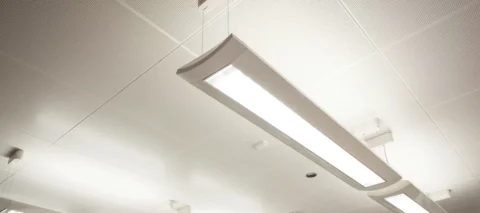The first signs of facial wrinkles and fine lines commonly show on the upper face areas, particularly the forehead. This is because the muscles on the forehead easily become overused due to repeated facial expression over time, causing dynamic wrinkles to appear. Among the cosmetic injectables today, Botox is the most popular anti wrinkle injection that relaxes the facial muscle to smooth away the visible lines and creases.
But why is it that sometimes Botox seems not to have any effect on the forehead wrinkles? There are several factors that can affect the efficiency of Botox when placed across the glabella or forehead area such as the number of injections, wrong placement of injections, or you have developed Botox resistance. The characteristics of your facial muscles and the severity of your wrinkles can also influence your Botox results.
Possible Reasons Why Your Botox Injection Is Not Taking Effect

To better understand the possible causes why Botox is not working on the forehead, it’s important to first understand how it does its job to remove common wrinkles and facial lines. Botox cosmetic, or botulinum toxin, is a popular neurotoxin injection derived from the Clostridium botulinum bacteria.
As a cosmetic procedure, Botox erases wrinkles by stopping the release of signals that are responsible for muscle contraction. This essentially puts the forehead muscle in a relaxed state which gradually reduces the appearance of forehead wrinkles, Crows feet, and frown lines. Botox can also inhibit nerve signals that cause medical conditions like muscle spasms, excessive sweating, cervical dystonia, and more.
For many years now, Botox is one of the commonly performed treatments for effectively eliminating the signs of wrinkles and aging without getting cosmetic surgery. But in rare events, you may have noticed that Botox is not working for your facial concerns. Here are some of the probable reasons why your forehead Botox injection is not working:
1. Not enough Botox injections were placed
Not all wrinkles and fine lines are the same. Experienced Botox providers are trained to administer a specific appropriate dosage of Botox for each type of wrinkle problem. For forehead wrinkles and frown lines, the standard practice is to place a total of 20 Botox units on four injection sites across the forehead.
If you did not receive the right amount of Botox unit needed for your forehead wrinkles, it’s highly possible that the treatment may not show your desired results. To avoid this mistake, you should always have an initial consultation with your provider to determine the exact amount of Botox injections you’ll need.
2. Botox was placed on the wrong injection site
A botulinum toxin injection requires precision when being placed on the forehead to make sure that it is injected into the right facial muscles. Less experienced injectors are more prone to committing this type of error and it can result in a bad Botox outcome or you may experience unwanted side effects like eyelid droop.
Choosing a reliable medical spa with a board certified dermatologist and skilled aesthetic staff can make all the difference to give you the best Botox results. Your injector should have extensive knowledge of a patient’s facial anatomy so they know where to put the Botox injections for maximum efficiency.
3. Botox was overly diluted during preparation
The method of preparation of Botox injection can also affect its effectiveness. Before placing the injections, your plastic surgeon or provider will partially dilute it with saline and it is crucial that they know the right mixture to avoid compromising its potency. If it is overly diluted, the injections may easily spread to nearby muscles losing their effectiveness on the forehead area and may result in complications like droopy eyebrows or eyelids.
4. You have thicker facial muscles than most patients
The number of injections you receive will also depend on your skin condition and your overall facial structure. For a patient with thicker facial muscles, they will need more injections to be able to stop the muscle activity in the intended treatment area.
Your muscle size can also affect how long Botox can stay in your face. The muscles in the forehead are typically larger so there’s a higher chance that it can quickly wear off or migrate to other areas, especially when you constantly move or contract the forehead muscle.
5. You have deeper and more severe wrinkles caused by loss of facial volume
Botox best treats dynamic wrinkles or expression lines that form due to years of facial movement and muscle contraction. While botulinum toxin injections can also correct deep folds and lines, they may not be as effective for wrinkles that are caused by loss of volume due to natural aging. Over time, your skin also loses collagen and elastin which can worsen the condition of your forehead wrinkles.
In these cases, Botox may not have any substantial effect on your skin. Your doctor may recommend exploring other cosmetic options like dermal filler treatments to restore volume to your face. They may also suggest a treatment plan combining Botox and dermal filler injections to get rid of your wrinkles and bring back your natural youthful look.
6. You have developed true Botox resistance
If you’ve been getting multiple Botox injections on your forehead for quite some time, your body may have developed antibodies to resist the effects of Botox. It’s still uncommon and from a report released by Allergan, the manufacturer of Botox, it is shown that no more than 1.5% of patients have only formed antibodies to the toxin.
Patients with a true Botox resistance will typically show no effects from the injections since the body’s immune system fights the toxin. It’s similar to the body’s autoimmune response when a virus or bacteria enters the system. It is also possible that your body will quickly metabolize the injection so it will have a short-lived effect on the treated areas.
What To Do If Botox Is Not Working

After your Botox procedure, you will need to wait at least seven to fourteen days to see its full effects. When the waiting period lapses and you notice that there are no visible improvements, you should consult again with your doctor. The following measures may be done to remedy your ineffective Botox treatment:
1. Increase the number of Botox injections
You can return to your Botox provider and depending on your first treatment, they may add new injections to increase its efficiency. The number of injections you initially received may not have been enough for your muscle size and placing more Botox can help you get the results you want.
2. Explore other Botox-type injectables
If you have developed antibodies specific to Botox, your doctor may recommend exploring other neurotoxin injections that have the same muscle relaxing effects. Some of the common alternatives to Botox for forehead lines are Dysport.
The difference between Botox and these two other injections is in their formulation. Dysport typically has a more diluted concentration so it has a higher rate of diffusion and is an ideal alternative for treating wrinkles on larger areas like the forehead. Since it spreads faster, Dysport also provides an earlier onset of results.
3. Get a revised treatment plan
If Botox is not working for your deep wrinkles and glabellar lines, your doctor may redo your treatment plan and suggest that you get dermal fillers. This is recommended for patients whose wrinkles and skin concerns are caused by facial volume and collagen loss. Fillers, like Juvéderm, Restylane, and Sculptra, are also great at helping stimulate collagen production to improve your overall skin texture.
4. Try other facial rejuvenation treatments
Laser skin resurfacing, chemical peels, and microneedling are other effective skin treatments that can help reduce wrinkles and fine lines.
Botox Aftercare To Make Its Effects Last
Botox doesn’t typically need downtime but a patient will be given certain aftercare instructions to make sure that the injections take effect without any problem. Here are some best post-treatment practices to make the effects of Botox last:
- Avoid touching your face frequently: After your injections, limit touching or massaging the treated area to avoid moving the toxin to other facial areas.
- Don’t stay out in the sun for too long: Sun damage can cause premature wrinkles in the skin and this can speed up the aging process which compromises the results of your Botox injections. Remember to wear sunscreen to protect your skin whenever you’re going outside.
- Practice a good skin care regimen: Having a good skin care routine can help enhance the effects of your Botox injection. It is recommended to use beauty products rich in hyaluronic acid and collagen to promote healthier skin and keep wrinkles at bay.
- Stay hydrated: Drinking water can help maintain your skin’s moisture which in turn keeps your skin plump and free from obvious wrinkles.
- Do facial exercises: You can try simple facial exercises or movements to let Botox settle in faster so you can see quicker results.
Try Our Safe and Effective Botox Treatments At Ethos Spa
Botox is an excellent wrinkle treatment that works for everyone but there are special circumstances when it may not produce your intended outcome. To assure that you get the best results for your forehead wrinkles, you should only consult with skin experts such as our doctors at Ethos Aesthetics + Wellness.
Ethos Spa specializes in high-class aesthetic treatments for clients in New Jersey and New York areas. We are also a trusted Botox provider with highly trained injectors that have performed numerous successful treatments. Contact us today and book an appointment.







